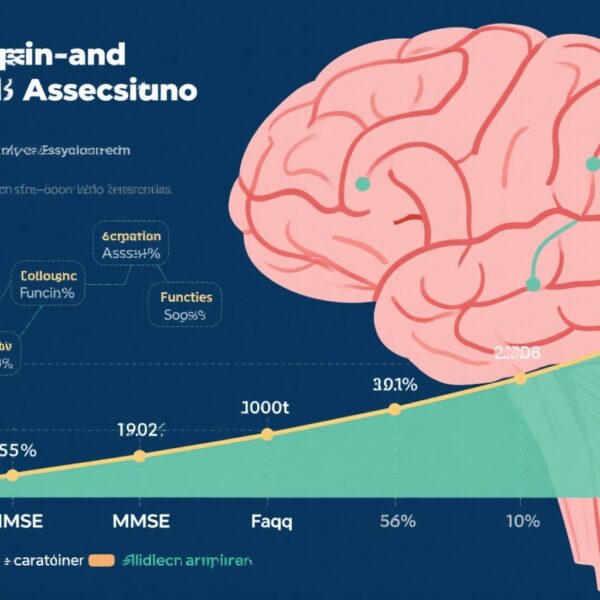Highlight
– Preoperative antibiotic treatment started while awaiting appendectomy does not reduce the rate of appendiceal perforation in adults with presumed uncomplicated acute appendicitis.
– The surgical site infection (SSI) rate within 30 days post-surgery is modestly reduced by preoperative antibiotics.
– Number needed to treat (NNT) to prevent one SSI is 63, indicating limited but measurable benefit.
– Findings suggest that routine administration of antibiotics before surgery may not be necessary if surgery is performed within 24 hours.
Study Background and Disease Burden
Acute appendicitis is a common surgical emergency worldwide, representing a significant burden on healthcare systems. Typically, uncomplicated appendicitis is managed by laparoscopic appendectomy, which is effective and generally safe. However, there has been longstanding interest in adjunctive antibiotic therapy to potentially slow inflammation progression, reduce the risk of appendiceal perforation, and minimize postoperative complications — particularly surgical site infections.
Despite theoretical benefits, the evidence supporting preoperative antibiotic treatment before appendectomy remains equivocal. The timing of antibiotic commencement, patient selection, and antibiotic choice vary widely in clinical practice. Avoiding unnecessary antibiotics is important in the context of antimicrobial stewardship, reducing costs, and side effects.
Study Design
The PERFECT-Antibiotics randomized clinical trial was designed as a multicenter, open-label noninferiority study conducted at two hospitals in Finland and one hospital in Norway, spanning from May 18, 2020, to January 22, 2023. Adults over 18 years diagnosed with presumed uncomplicated acute appendicitis and scheduled for laparoscopic appendectomy were eligible. Exclusion criteria included allergy to study antibiotics, pregnancy, pre-existing antibiotic treatment, suspected perforated appendicitis, or clinical scenarios demanding immediate surgery.
A total of 1797 patients were randomized 1:1 via a web-based service simultaneously with surgical scheduling to receive either preoperative antibiotics (cefuroxime 1500 mg and metronidazole 500 mg intravenously every 8 hours until surgery) or no antibiotic treatment while awaiting appendectomy. All patients received a single prophylactic antibiotic dose at anesthesia induction. The median in-hospital waiting time before surgery was 9 hours (IQR 4–16).
The primary endpoint was the incidence of appendiceal perforation diagnosed intraoperatively by the surgeon’s assessment. Secondary outcomes included surgical site infection rates within 30 days postoperatively, need for reintervention, and other complications assessed through electronic health records.
Key Findings
After exclusion of 23 patients post-randomization, 1774 patients were analyzed in an intention-to-treat framework: 888 in the antibiotic group and 886 in the no-antibiotic group. The groups were demographically balanced with a median age of 35 years and 45% females.
Primary Outcome: Appendiceal perforation occurred in 8.3% of the antibiotic group and 8.9% of the no-antibiotic group, yielding an absolute difference of 0.6 percentage points (95% CI, -2.0 to 3.2; P=0.66). This difference was within the predefined 5-percentage-point noninferiority margin, demonstrating that withholding preoperative antibiotics did not increase the risk of perforation when surgery occurred within 24 hours.
Secondary Outcomes: The surgical site infection rate was significantly lower in the antibiotic group (1.6%) compared to no antibiotics (3.2%), an absolute difference of 1.6 percentage points (95% CI, 0.2 to 3.0; P=0.03). Reintervention rates following SSI were 0.3% in the antibiotic group and 1.0% in the no-antibiotic group. The number needed to treat (NNT) to prevent one SSI was 63, and to prevent one reintervention was 125.
The risk ratio for perforation was 1.07 (95% CI, 0.79 to 1.45), indicating no statistically significant increased risk with delayed antibiotics. Limited crossover occurred: 11 patients in the no-antibiotic group did not receive prophylaxis at anesthesia induction, while this happened in only one patient in the antibiotic group.
Expert Commentary
This trial provides robust evidence clarifying the role of prophylactic antibiotics given preoperatively while awaiting appendectomy in uncomplicated acute appendicitis. The lack of impact on appendiceal perforation aligns with the concept that appendiceal rupture risk depends predominantly on timing to surgery rather than early antibiotic administration.
The reduction in surgical site infections is consistent with established knowledge that antibiotic prophylaxis around the time of surgery reduces postoperative infections. However, starting antibiotics earlier than induction does not confer significant additional benefit in preventing perforation.
These findings are critical for antimicrobial stewardship. Avoiding routine preoperative antibiotic administration in patients scheduled for surgery within 24 hours minimizes unnecessary antibiotic exposure, potentially reducing resistance and side effects, yet maintaining excellent operative outcomes.
Limitations include the open-label design, potentially introducing bias in assessment of outcomes like SSI, although objective criteria and electronic health record verification mitigate this. The trial was conducted in northern European centers with access to timely surgery, so applicability to settings with prolonged surgical wait times requires caution.
Conclusion
The PERFECT-Antibiotics trial demonstrates that, in adult patients with presumed uncomplicated acute appendicitis undergoing laparoscopic appendectomy within 24 hours, preoperatively started antibiotic treatment does not reduce the rate of appendiceal perforation but does modestly decrease surgical site infections.
This supports current guidelines advocating for single-dose prophylactic antibiotics at induction of anesthesia rather than prolonged preoperative antibiotic administration. Clinicians should weigh the small reduction in postoperative infections against antimicrobial stewardship principles, especially where surgical care can be delivered promptly.
Further research is needed to explore antibiotic timing and necessity in delayed surgical settings and to optimize protocols to balance efficacy, safety, and resistance concerns.
References
- Jalava K, Sallinen V, Lampela H, Malmi H, Steinholt I, Augestad KM, Leppäniemi A, Mentula P. Role of Preoperative Antibiotic Treatment While Awaiting Appendectomy: The PERFECT-Antibiotics Randomized Clinical Trial. JAMA Surg. 2025 Jul 1;160(7):745-754. doi: 10.1001/jamasurg.2025.1212. PMID: 40366704; PMCID: PMC12079561.
- de Jonge SW, Boermeester MA. Minimally Important Difference for Prophylactic Antibiotics. JAMA Surg. 2025 Sep 24. doi: 10.1001/jamasurg.2025.3764. Epub ahead of print. PMID: 40991307.


